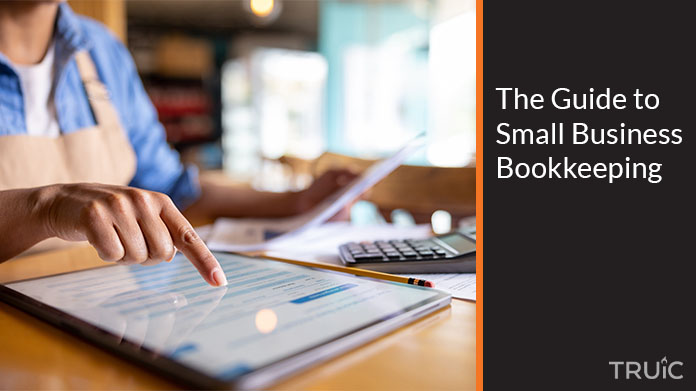The Guide to Small Business Bookkeeping
Every business needs a solid bookkeeping system to keep track of their expenses. In this guide, we will show you how to set up bookkeeping that works best for your business as well as some of the most common mistakes you may encounter along the way.
Recommended: QuickBooks has all the accounting features your small business will need.
Try QuickBooks for free

Bookkeeping vs. Accounting
While bookkeeping and accounting sound like interchangeable words, they actually refer to different financial processes. Bookkeeping is the organization of all your business-related transactions. This makes it easier when it comes time to do accounting, which is the interpreting and analyzing of said transactions.
In order to keep your bookkeeping experience stress-free, make sure you follow these guidelines when creating your financial strategies:
- Create a Business Plan: Before going forward with your bookkeeping process, make sure that you have a good business plan in place. Different entities have different requirements when forming and filing taxes. Use our free Business Plan Generator to help you get started.
- Set Up a Separate Bank Account: Setting up a business bank account helps you establish professionalism, protects your personal assets, and gives you access to finance professionals. More importantly, having a separate business bank account helps simplify the accounting and bookkeeping process. You can track spending, deposits, and plan business budgets. Obtaining a business credit card can also help with this goal.
- Choose Method of Accounting: Your method of accounting determines how you report revenue and expenses to the IRS. There are two different accounting methods: cash accounting and accrual accounting. The main difference between the two options is the time in which you recognize your expenses and income.
- Cash accounting records income when you receive it and expenses when you pay them. This means that your business would only track cash as it exchanges hands so that you can always know how much money you have on hand. However, the downside to cash accounting is that it doesn’t give a clear picture of your unpaid liabilities.
- Accrual accounting, on the other hand, keeps track of earnings regardless of whether or not cash is exchanged. For example, if your business needs to pay a freelancer, you would record the expense as “accounts payable” once the service is complete, not when you actually pay them. Likewise, any incoming revenue would be recorded as “accounts receivable” as soon as the services are complete, rather than when you receive the cash.
- Establish a Bookkeeping System: In order to keep up with your business finances, you must establish a method of documenting and preparing your records. You can do your bookkeeping manually (e.g. pen and paper, Microsoft Excel), or you can use an accounting program to keep track of your expenses.
Recommended: QuickBooks has all the accounting features your small business will need.
Common Setup Mistakes
Whichever method of accounting you choose, make sure you avoid these common mistakes, or your business may be in jeopardy and you may be liable for any of the money owed.
Poor Planning
Before launching your business, have a plan set in place for your expenses. By looking to the future, you can determine what tax structure is best for your business and prepare accordingly. Leaving your bookkeeping to the last minute can lead to unneeded stress and potential miscalculations.
That being said, there is such a thing as planning too much. Making your plans too rigid also won’t account for anything unexpected. Too little long-term planning, and you won’t properly account for growth. Too much, and you will face the potential of unrealized growth.
Lack of Organization
It’s not enough to just have a plan, however; implementing good organization tactics is crucial to keep your finances in order so that you can always know where to find your profits and losses.
To reiterate, one of the first steps toward keeping things orderly is separating your business accounts from your personal accounts. This will help you avoid any blurred lines between professional and nonprofessional transactions.
When you set up your chart of accounts—a list to classify revenues, expenses, assets, and liabilities—make sure that you keep things manageable and detailed. By not classifying things into multiple accounts, you can easily lose track of what expenses are deductible and what expenses are not. Too many bank accounts can lead to forgetfulness. Remember that every account should have a purpose!


